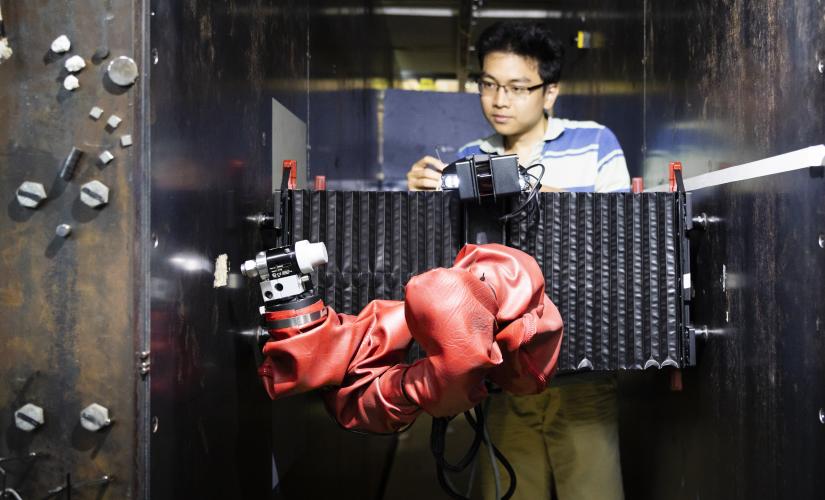A chippy, a sparky ... and WALL-E
A world-first $23 million research hub will explore ways tradies can ‘get on the tools’ with robots on building sites in the future.

UTS researchers grit-blasting robot helps maintain critical infrastructure. Photo: Andy Roberts
From automated bricklaying to self-driving vehicles, some tasks in construction could one day be performed by robots. But most construction jobs are complex, meaning the future of the industry will involve people and robots working together.
The new ARC Research Hub for Human-Robot Teaming for Sustainable and Resilient Construction will spend the next five years making this future a reality by exploring how construction workers can team up with intelligent robots to make construction sites safer and more efficient.
“Labour shortages are one of the biggest challenges being faced by the construction industry, with estimates Australia is currently short of 100,000 construction workers. Many construction projects are struggling with high costs and delays,” says Hub Director, Distinguished Professor Dikai Liu.
“Technology has vast potential to fill some of these shortfalls, as well as finding new ways to improve workplace health and safety by automating some of the more dangerous construction tasks.”
The hub will be led by UTS researchers alongside experts from six other universities and 15 other construction companies and industry organisations.
“Our hub will conduct truly interdisciplinary research. We have researchers from robotics, engineering, artificial intelligence, computer science, safety, ethics, business and social technical systems,” says Professor Liu.
Over the next five years, we’ll be advancing new technologies for various applications in construction. At the end of the day, we’ll be working with our partners to see this knowledge and technology transferred into projects.
Professor Dikai Liu
The research will build on the decades of research done by Professor Liu and Australia’s leading role in pioneering the use of robotics in infrastructure.
“At UTS, we have spent the past 20 years building up a new field in infrastructure robotics. We’ve built a number of intelligent robots that perform difficult and dangerous tasks like maintenance on the Sydney Harbour Bridge and underwater structures,” he says.
“This research hub builds on the work we’ve done from a technology point of view. But it will be a significant extension to address the many challenges that arise when multiple humans work with multiple robots in complex collaborations.”
The hub is supported by $5 million in funding from the Australian Research Council’s Industrial Transformation Research Hub scheme, which funds the creation of industry and academic partnerships working together on research and development projects to create innovative and transformative solutions for industry.
University and industry partners will contribute a further $6.3 million in funding with an additional $11.9 million of in-kind support over the five years of the hub.
